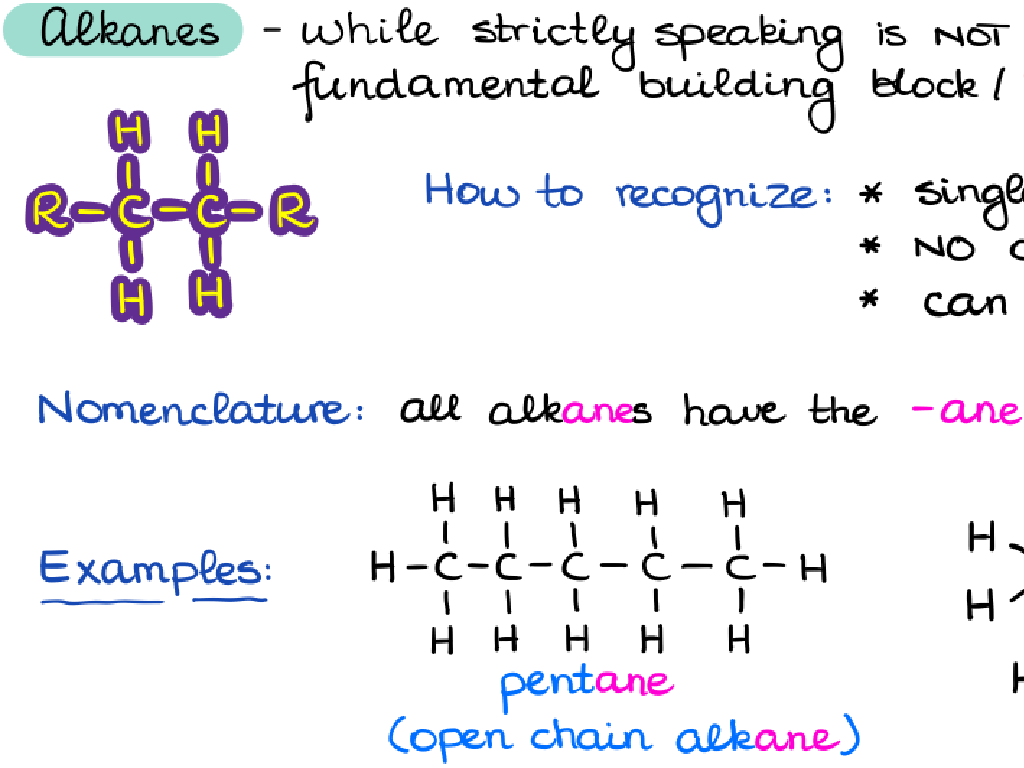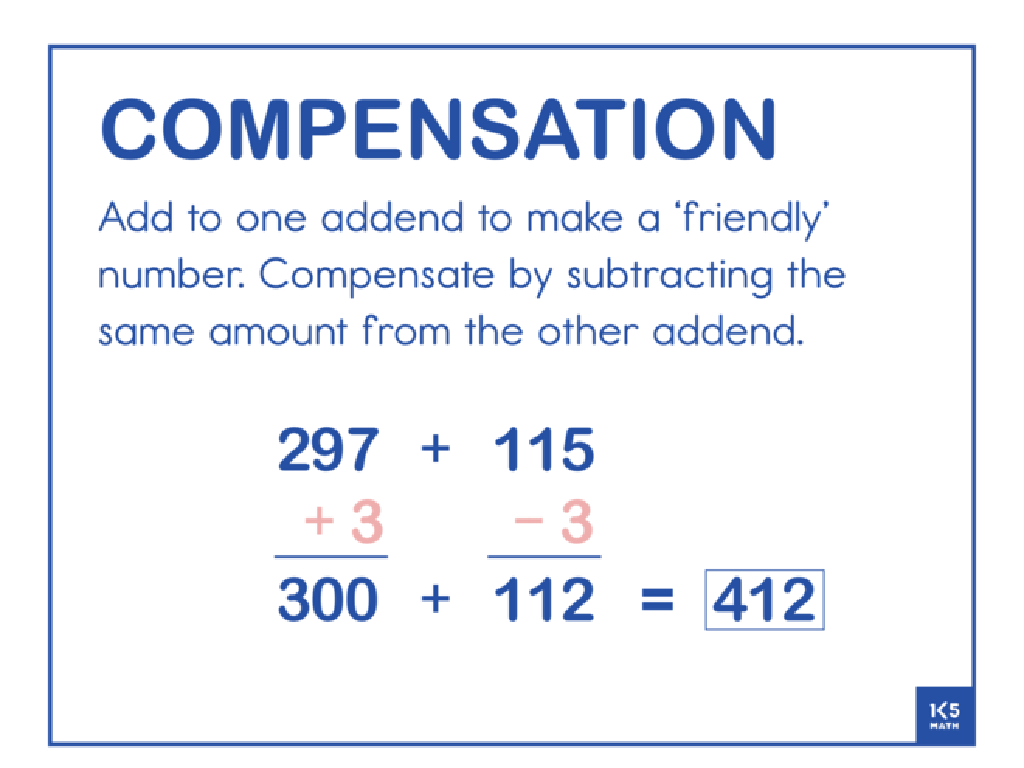Analyze Passages From Harriet Tubman: Conductor On The Underground Railroad: Part 1
Subject: Language arts
Grade: Sixth grade
Topic: Nonfiction Book Study
Please LOG IN to download the presentation. Access is available to registered users only.
View More Content
Exploring Harriet Tubman’s Legacy
– What is nonfiction?
– Nonfiction is factual writing about real events and people.
– Harriet Tubman’s significance
– Known for leading slaves to freedom via the Underground Railroad.
– Analyzing ‘Conductor on the Underground Railroad’
– We’ll examine passages to understand Tubman’s journey and challenges.
– Tubman’s impact on history
– Her bravery changed countless lives and altered the course of history.
|
This slide introduces students to the genre of nonfiction through the lens of Harriet Tubman’s life, as depicted in ‘Conductor on the Underground Railroad.’ Begin by defining nonfiction and its purpose. Emphasize Harriet Tubman’s role as a conductor on the Underground Railroad and how her actions played a pivotal role in the fight against slavery. Guide students to analyze specific passages from the book, focusing on the language used to describe her experiences and the broader context of her actions. Discuss how her courage and determination have left a lasting impact on American history. Encourage students to think critically about the qualities that made Tubman a significant historical figure and how nonfiction texts can offer insights into real-world heroes.
Exploring Harriet Tubman’s Legacy
– Harriet Tubman’s early life
– Born into slavery, escaped in 1849
– Tubman’s Underground Railroad role
– Led hundreds to freedom as a ‘conductor’
– Her impact on history
– Key figure in abolition and women’s suffrage
– Tubman as a symbol of freedom
|
Harriet Tubman’s life is a testament to the power of courage and determination in the face of injustice. Born into slavery, she escaped and went on to lead many others to freedom via the Underground Railroad, earning her the nickname ‘Moses of her people.’ Her actions had a significant impact on the abolition movement and later on women’s suffrage. Tubman’s legacy continues to inspire countless individuals and serves as a powerful symbol of the fight for freedom and equality. In class, encourage students to discuss the qualities that made Tubman an effective leader and how her bravery continues to influence people today.
Understanding Nonfiction Texts
– Fiction vs. Nonfiction
– Fiction is made-up; nonfiction is based on real events.
– Key traits of nonfiction
– Nonfiction contains facts, real events, and reliable information.
– Identifying facts in texts
– Look for evidence, check if it’s supported by other sources.
– Analyzing ‘Harriet Tubman’
– Use skills to examine ‘Harriet Tubman: Conductor on the Underground Railroad’.
|
This slide aims to help students distinguish between fiction and nonfiction texts, focusing on the characteristics that define nonfiction. Emphasize that nonfiction is factual and based on real-life events, unlike fiction, which is created from the imagination. Teach students to identify factual information by looking for evidence and cross-checking with other reliable sources. Apply these skills to analyze passages from ‘Harriet Tubman: Conductor on the Underground Railroad,’ encouraging students to find factual details about her life and the Underground Railroad. This will not only enhance their comprehension of nonfiction texts but also provide historical context and understanding of Harriet Tubman’s significance.
Vocabulary Preview: Harriet Tubman’s Journey
– Introduce key text vocabulary
– Explore definitions with examples
– ‘Conductor’ means a person who guided slaves to freedom.
– Practice word pronunciation
– Emphasize correct syllable stress and sounds.
– Use new words in sentences
– Create your own sentences using the new words.
|
This slide is aimed at familiarizing students with the important vocabulary they will encounter in ‘Harriet Tubman: Conductor on the Underground Railroad.’ Start by introducing the key terms and their definitions. Provide clear examples for each word to ensure students can relate the terms to the context of the book and beyond. Next, focus on pronunciation, helping students to say each word correctly, which is crucial for their reading fluency and comprehension. Finally, have students practice using the new vocabulary in their own sentences, which will aid in cementing their understanding of each word’s meaning and proper usage. Encourage students to share their sentences and provide feedback to each other.
Analyzing Nonfiction: Harriet Tubman
– Steps to analyze a passage
– Read carefully, note key points and ask questions about the text
– Find main ideas and details
– Look for the central point and facts that back it up
– Make inferences from text
– Use clues to read between the lines and grasp deeper meaning
– Understanding Tubman’s journey
– Relate facts and inferences to Tubman’s role in the Underground Railroad
|
This slide aims to equip students with the skills needed to dissect and comprehend a nonfiction passage, using ‘Harriet Tubman: Conductor on the Underground Railroad’ as a case study. Start by guiding students through the process of analyzing text, including careful reading and questioning. Teach them to identify the main ideas and supporting details that structure the passage. Encourage them to make inferences based on textual evidence, which will help them understand the nuances of the text. Relate these skills to understanding Harriet Tubman’s experiences and actions, providing a real-world application of these analytical strategies. This will not only enhance their reading comprehension but also their appreciation for historical figures and events.
Reading Aloud: Harriet Tubman’s Journey
– Read ‘Harriet Tubman: Conductor on the Underground Railroad: Part 1’ aloud
– Follow along with personal copies
– Keep track of the story with your own book
– Pause for discussion and clarification
– Ask questions if you’re confused about the text
– Engage with the text actively
– Think about what Harriet’s experiences might have been like
|
This slide is designed to guide the class through a group reading session. The teacher will read aloud from ‘Harriet Tubman: Conductor on the Underground Railroad: Part 1’ while students follow along in their own copies. Pauses will be made periodically to discuss the content, clarify any confusing points, and engage students with the material. Encourage students to think critically about the text and make personal connections to the experiences of Harriet Tubman. This activity will help students improve their listening skills, vocabulary, and comprehension of historical texts.
Discussion Time: Analyzing Harriet Tubman
– Identify main ideas of the passage
– Find details that support the ideas
– Look for quotes, events, and descriptions
– Make inferences about Tubman’s character
– Consider Tubman’s decisions and their consequences
– Discuss the impact of Tubman’s actions
– Reflect on how her bravery and leadership affected others
|
This slide prompts students to engage in a discussion about the key elements of the passage from ‘Harriet Tubman: Conductor on the Underground Railroad.’ Students should first identify the central themes and then support their ideas with specific details from the text. They are also encouraged to infer qualities of Harriet Tubman’s character based on her actions and the narrative’s portrayal. Finally, students should contemplate the broader impact of Tubman’s actions on history and society. The teacher should facilitate the discussion, ensuring each student contributes and understands the significance of textual evidence and inference in literary analysis.
Analyzing Harriet Tubman’s Journey
– Examine the Underground Railroad map
– Look at the routes used for escape
– Discuss risks and challenges faced
– Harriet faced dangers like capture and betrayal
– Connect passage to historical facts
– Relate the story to actual events and dates
– Reflect on Tubman’s bravery
– Consider the courage it took to be a conductor
|
This slide aims to deepen students’ understanding of Harriet Tubman’s role in the Underground Railroad. Start by examining a map to visualize the routes used by escapees. Discuss the significant risks and challenges Harriet and the fugitives faced, including the constant threat of capture and the reliance on the secrecy and goodwill of others. Encourage students to connect the narrative to real historical facts, enhancing their grasp of the period. Finally, prompt them to reflect on the extraordinary bravery and resilience demonstrated by Harriet Tubman. This discussion will help students appreciate the historical context and the human aspects of courage and determination.
Role-Play Activity: Exploring Perspectives
– Role-play a passage scene
– Act out a scene from Harriet Tubman’s journey
– Understand characters’ perspectives
– How do different characters view their world?
– Discuss feelings and insights
– Share what emotions you felt during the role-play
– Reflect on the historical context
– Why is this part of history important?
|
This class activity involves students in role-playing to help them understand the different perspectives of characters in ‘Harriet Tubman: Conductor on the Underground Railroad.’ By acting out scenes, students can explore the emotions and motivations of historical figures. After the performance, lead a discussion to delve into the feelings experienced and the lessons that can be learned from the passage. Encourage students to think about the historical significance of Harriet Tubman’s actions and the Underground Railroad. Provide guidance on how to respectfully and thoughtfully portray the characters, considering the sensitive nature of the subject matter. Possible role-play scenes could include Harriet’s decision to escape, helping others on the Underground Railroad, or moments of challenge or triumph.
Reflection and Homework: Harriet Tubman’s Journey
– Reflect on today’s lesson
– Write a short summary of what you’ve learned about Harriet Tubman.
– Homework: Diary entry as Tubman
– Imagine you are Harriet Tubman and write a diary entry about your experiences.
– Prepare for the upcoming quiz
– Review today’s material to get ready for a quiz in the next class.
|
Today’s class focused on Harriet Tubman and her role in the Underground Railroad. For homework, students are to write a reflection to consolidate their understanding of the material. Additionally, they are tasked with writing a diary entry from the perspective of Harriet Tubman, which will help them empathize with her experiences and the historical context. This exercise also encourages creative thinking and writing from another person’s viewpoint. Lastly, students should prepare for a quiz during the next class by reviewing their notes and the passages discussed today. This will help reinforce their knowledge and ensure they have grasped the key concepts of Harriet Tubman’s life and legacy.






